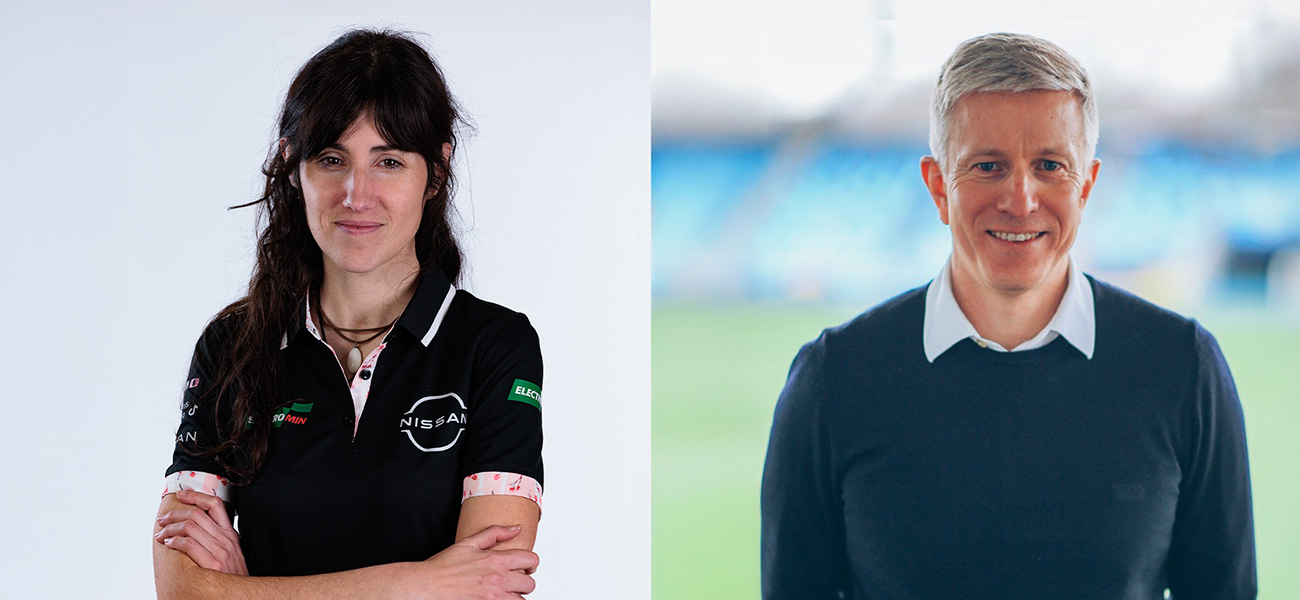The use and analysis of data in sports is not a new phenomenon. Even in the early days of sports, teams, coaches and players were using basic numbers and probabilities to give them a competitive edge.
As technology has developed, these findings have been used more and more, with data and sports now more intertwined than ever before. Major League Baseball teams use the ‘Moneyball’ approach first pioneered in the early 2000s to sign players, while teams in cricket’s T20 competitions have long been using advanced matchups to decide the make-up and order of their batters and bowlers. Motorsport has especially been at the forefront of data usage, with sensors on cars sending a huge amount of feedback to teams.
However, not all sports analyse and use data in the same way. Formula E and football could hardly be further apart as sports, yet both Cristina Mañas Fernández, Head of Performance and Simulation at the Nissan Formula E Team, and Simon Timson, Performance Director at Manchester City Football Club, spend their days dealing with data. The pair discussed how they use data in their roles, and how it plays a factor in the decisions made at the top level of their disciplines.
“Data is really important to us for a number of reasons,” stated Timson, who has been with the eight-time Premier League champions since July 2020. “It provides unique insights into all elements of our work, including talent identification, recruitment decision making, tactical plans, injury prevention and much more. Having the right data, both in real time and retrospectively, helps to reduce uncertainty and gives people more confidence in the choices they make on a daily basis.”
The process in similar in Formula E, although there is one obvious difference between the sports; the car. “For us it’s fundamentally the same,” responded Mañas. “However, we have the athlete, the driver, but then also this complicated piece of machinery in the form of the car. The only way we can understand how it works and what we need to improve on is through data. We collect data every time the car goes on track, so it is imperative for the engineers to study this to be able to know what to do in the next session.”
One major difference between the two sports is the athletes available to each team. While the Nissan Formula E Team has Oliver Rowland and Norman Nato as its race drivers for the 2024/25 campaign, Manchester City can pick from a much larger squad of players, all with their own strengths and weaknesses. This gives the football club much more flexibility from matchday to matchday, where they can select the team based on multiple factors, including form, injuries, opposition and much more.
This has led Manchester City to create profiles for every player in the squad, displaying the skills of each, which allows the coaches to carefully select the perfect 11 for a certain match.
In Formula E, with just two drivers (plus the reserve one), things are quite different in that respect. “For us, there isn’t such a thing as a model for each driver”, said Mañas. We cannot attribute numbers to their styles. We do more qualitative work for this aspect, the race and performance engineers work specifically to understand each driver’s style and then focus the set-up on the direction we know will help to extract performance.
“When it comes to what we call the ‘mapping’ or the fine-tuning of the car, this is very much done with the driver’s style in mind,” explained Mañas. ”So while it looks like both cars are the same, this isn’t the case. We also set the car up differently when it comes to certain situations, for example if we start at the front or the back, depending on the race strategy.”
Fixture pile-ups
With all the groundwork in place for the season ahead, focus for both then turns to each individual event, where more variances between the two sports can be found. Formula E has a concrete calendar, so the race team knows months in advance exactly how long they have between each. In football, especially in the case of Manchester City in recent years, deep runs into cup competitions can often result in fixture pile-ups, particularly in the second half of a season. While this gives Nissan Formula E Team more time to prepare, the actual processes of the two are similar.
“Our preparation for a race weekend starts about two or three weeks prior to the event,” explained Mañas. “First, we do a pre-event report, where we characterise the track and nail down exactly what we need to be quick on that particular layout. Then we have two or three days in the simulator, where the drivers and engineers work together, trying different set-up combinations and figuring out what fits best.

“After we arrive on site for the event, we use the first practice session to see if we are performing at the expected level. Because of the nature of Formula E tracks, mostly in city centres, there’s usually small differences, but every team has the same issues on this. From that point on, if the driver is comfortable then we can focus on building up to qualifying and the race.”
Timson agreed, adding: “Our process is similar in terms of the principle of planning and reviewing. I think the main difference is our data makes fewer decisions for the coaches than maybe it does for the engineers and drivers in Formula E.”
Ultimate performance
Even though football and Formula E are vastly different sports, considering the number of athletes, regularity of fixtures and use of machinery, data is crucial for both when it comes to extracting the ultimate performance.
Mañas and Timson both have huge responsibilities to ensure the right data is passed on, at all stages of the year, whether that be pre-season, pre-event or during an event. Data analysis and use is here to stay in sports, and in the coming years, we can expect people like Mañas and Timson to be even more vital to their respective teams than ever before.






